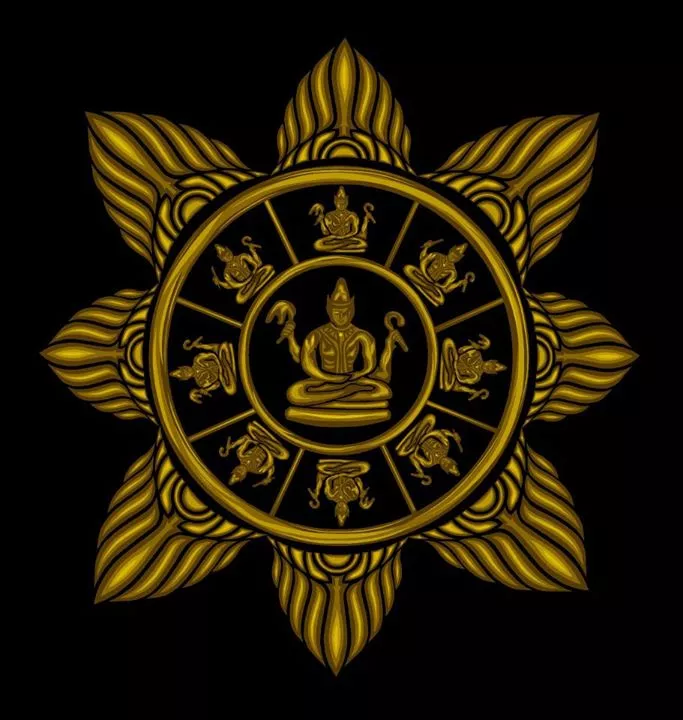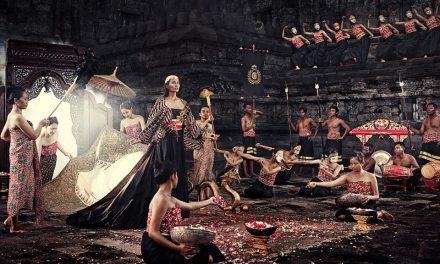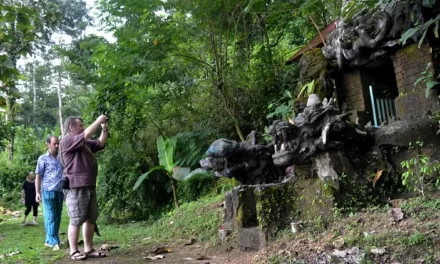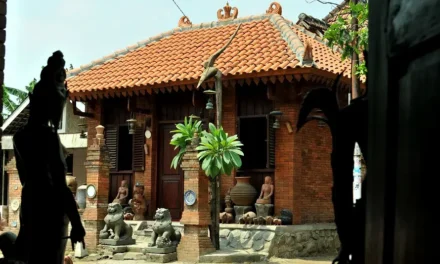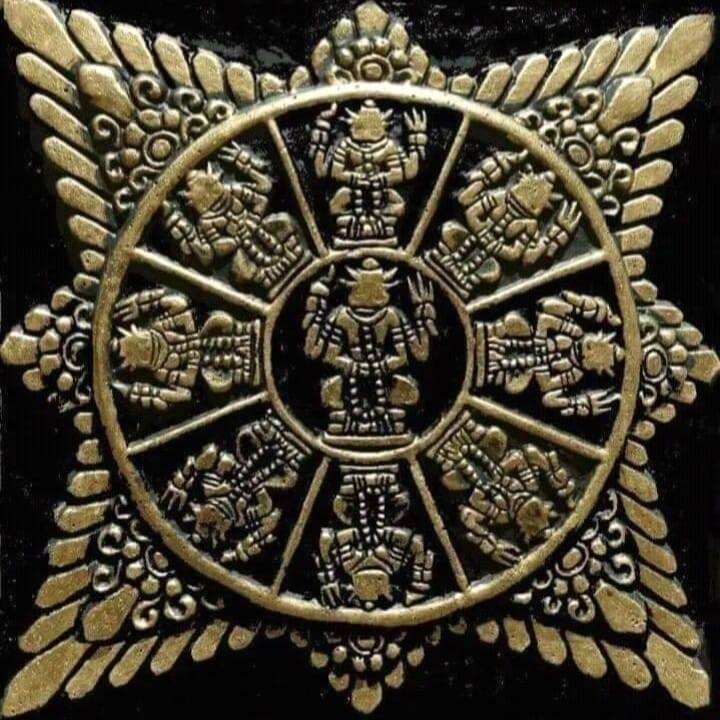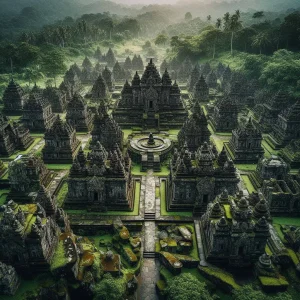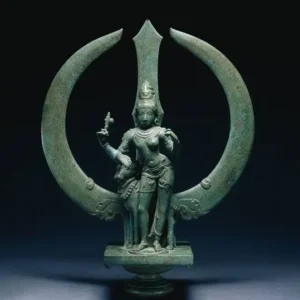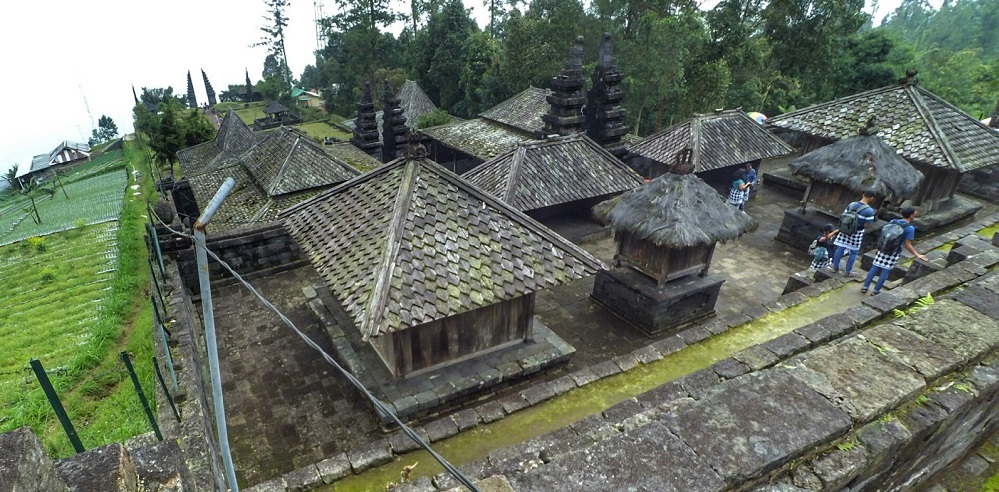
One the slopes of Mount Lawu lies a Hindu-Javanese community called Dusun Cetho in Gumeng Village (Kabupten Karanganyar). It is located right next to the Cetho Temple.
Cetho Hamlet is adjacent to the sacred Perhutani Forest and the peak of Mount Lawu on the east and north sides and the agricultural fields on the south and west. The soil in this area is relatively fertile, and pine and pine trees dominate the vegetation.
The Cetho temple complex was built at the end of the Majapahit era, at the time when the empire was undergoing social, political, cultural and religious unrest under the onslaught of the islamization of Java, when Majapahit loyalists began to retreat onto mountainous areas, then to East Java and later further into Bali.
Javanese wisdom: Memayu Hayuning Bawana
In the Javanese worldview, human life can not be separated from the environment. Through experience and observation, the Javanese built their environmental ethics, ultimately giving birth to local wisdom values passed down from generation to generation.
In regulating human relationships with nature, the Javanese recognize the philosophy of Memayu Hayuning Bawana.
- Memayu comes from the word hayu (beautiful, beautiful or safe) by getting the prefix ma, to be mamayu (beautify, beautify or improve safety).
- Hayuning comes from the word hayu by getting the pronoun of belonging ning (his) which means beautiful, beauty or salvation. Memayu hayuning therefore means “striving for safety, happiness and prosperity”.
- Bawana means “the world” (bhuvana in Sanskrit), which can be interpreted either physically or spiritually.
The understanding of Memayu Hayuning Bawono is therefore “to strive for the salvation of the world and to keep the world and all its contents in order to remain preserved and harmonious”. It is the Javanese counterpart to the Balinese philosophy of Tri Hita Karana.
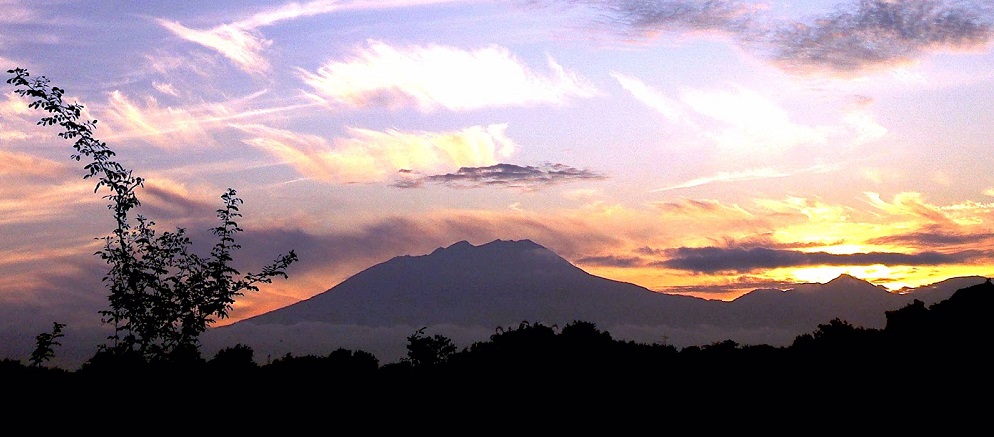
House Settings in the Cetho Hamlet
The topographic condition of Dusun Cetho has a fairly steep slope of the land makes the settlement pattern of quite unique.
The population of Cetho will level the land before it is constructed in a “batur” manner (cut and fill method).
There is an unwritten agreement in which the landowners in the above positions are obliged to build a stone talus as a barrier to the land and at the same time resist landslide.
Javanese houses in this rural settlement have an average two groups of building, griya (building function) wingking with dhapur (roof shape) limasan sinom and griya gandhok also with dhapur limasan or kampung.
The Griya wingking of the Cetho Hamlet community is better known as ndopo and senthong (left, center, right). While the gandhok was set up as pawon (a kitchen):
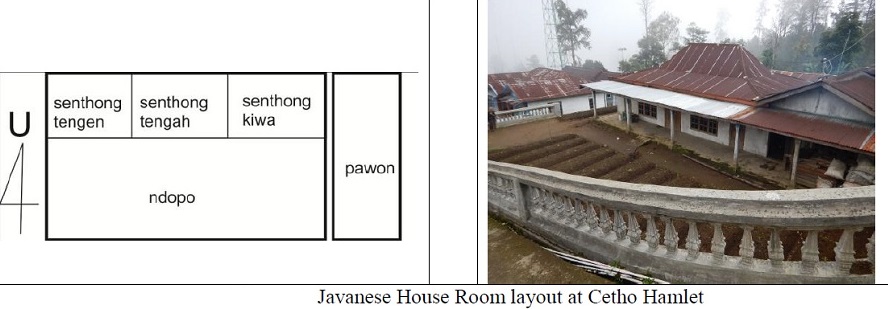
It generally shows two groups of building (griya wingking and griya gandhok (pawon).
When referring to the guidelines for Javanese building, Kawruh griya Titika Wisma, griya wingking in the hamlet of Cetho have different conditions.
Griya wingking description in Kawruh Griya script requires a high degree of privacy, otherwise the condition is different from griya wingking in the hamlet of Cetho.
In front of senthong room (Cetho residents often call it Ndopo) the owners used it for various activities such as dining room and a couch to sleep on.
This room is a family residence for all activities. It became one of the central features of houses in the Javanese rural settlement, where a building accommodates various functions/activities.
The house wall initially uses gedhek (bamboo weaving) and partly uses natural stone construction. The stone is arranged using limestone adhesive.
Water Management
The first source of water used as a source of clean water supply is the source of Sendang Pundisari water springs.
The location of this water spring is right above the highest terrace of Cetho Temple (east of the temple), like the Hindu temples in other areas.
In general, temples are built in locations that have a good source of water, because water plays an important part inthe Indonesian Hindu ritual.
The location of the Cetho hamlet (under the Cetho Temple) simplifies the process of distribution of water without the use of pumps (relying on the force of gravity).
The agricultural system in Dusun Cetho is rain-fed agriculture.
The source of water springs is located at Sendang Macan, about one kilometer above Cetho temple. Water from Sendang Macan water springs is distributed to a distribution tank that is not far from the water springs. From a distribution tank , water flowed into houses in the settlement.
The Mondosiyo Ritual
The name mondosiyo is taken from one of the names of wuku Mandhasiya in the order of 14 of 30 wuku based on Javanese calendar. The Mondosiyo ritual falls on Tuesdays and will be repeated every day, considering that one wuku lasts seven days.
According to the Cetho Hindus, respect for nature aims to to maintain harmony between macrocosmic natural and microcosmic realm. The ritual is an effort to meruwat (regenerate) the orderliness of the cosmos to create harmony and tranquility of village’s life.
This tradition is also at the same time a tribute to Eyang Krincing Wesi’s birthday, who is believed to be the Dhanyang (guardian spirit) of the village. A dhanhyang is considered to be the spirit of the deceased historical figures (the founder of the local village, the first person who opened the land).
According to the Dusun Cetho myths, Eyang Krincing Wesi is the caretaker of Cetho. After his death he was buried near the village and his tomb became punden. Punden is the founder of the village who is considered sacred and their spirits are believed to still keep an eye on the village and can provide assistance.
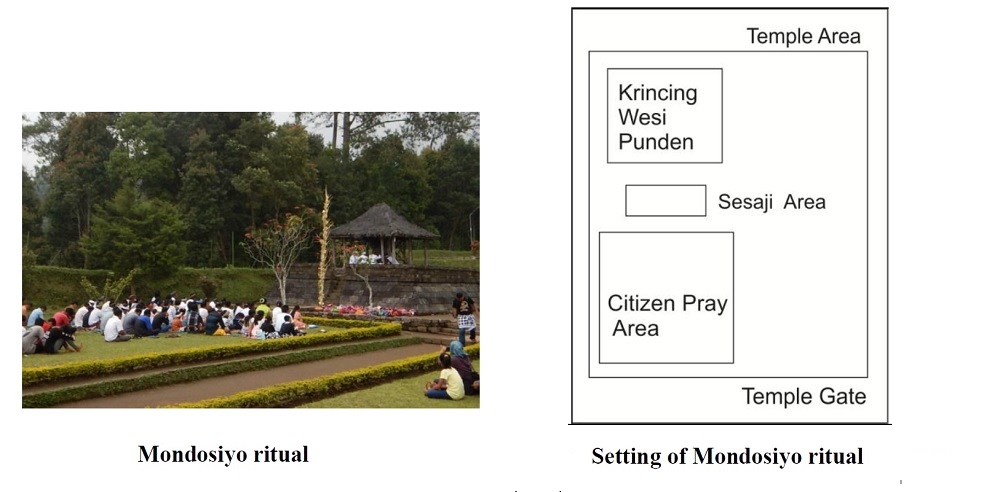
The Mondosiyo ritual is five hundreds years old and has never been broken up. It begins one day before (Monday-Wage), the residents prepare traditional offerings of special food (tumpeng panggang). Then, on a Monday night, the tirakatan (ceremony) is held in front of the Krincing Wesi Punden.
On the Day (Tuesday Kliwon), residents go together to Krincing Wesi Punden around 10:00 am and offerings to carry out a pray together. In the evening, the usually hold a wayang (sacred puppet show).
The Dawuhan Ritual
The Dawuhan ritual is done every six months on Saturday kliwon. Dawuhan Ritual is an expression of gratitude for the citizens of Cetho hamlet on the availability of water and at the same time a form of homage to the water god of the water source in the village of Cetho.
A set of roasted tumpeng (rice, roast chicken, side dishes, fruit, flowers) is prepared during the Dawuhan ritual. Events usually start around 10:00 and finish at noon. The activity is led by the Mangku (Indonesian Shiva-Buddha priest) of Cetho.
The Dawuhan ritual is carried out by water channeling the source center and then ending with a pray at Sendang Pundisari, an ancient water springs located above Candi Cetho. For the residents, the water source is a holy place, because water is used for all the life needs and water serves as a complement of worship rituals.
This is why Indonesian Hinduism is also often called Agama Tirtha (Religion of the Holy Waters) due to the optimal use of water from the mountains and hills of Java that has been observed for more than 2000 years.
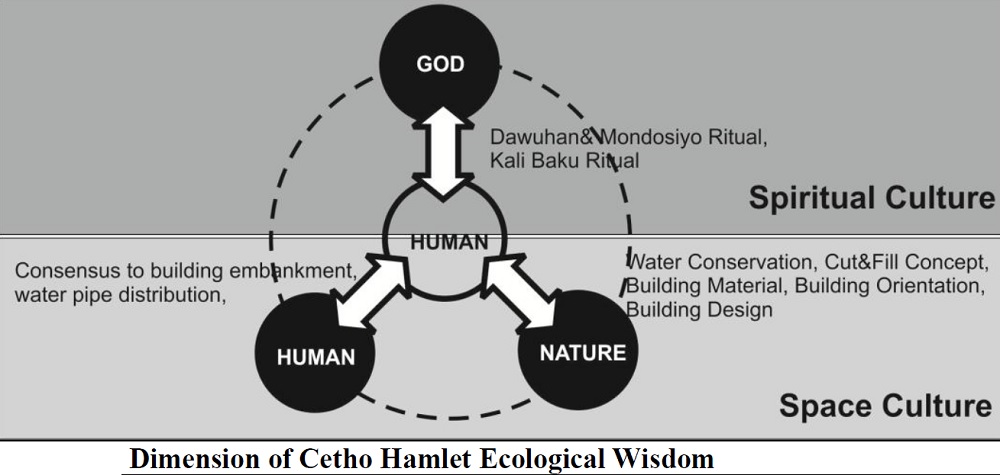
Ecological Wisdom of the Cetho hamlet
The Hindu-Javanese lifestyle combines therefore the harmony of the relationship among humans, as well as that of humans and their environment and humans with the spiritual world and God (Shiva).
The local wisdom in Dusun Cetho includes a consensus around the construction of embankment, the cut and fill concept, building material selection, determination of building orientation, consensus of water management and agricultural land.
For the people of the Cetho village, the balance between the ecological and spiritual dimension of culture merge as one, over the basis of the realization of the Memayu Hayuning Bawono (or Tri Hita Karana) philosophy, an ideal condition that is expected by every Javanese people in arranging the environment of his birth and mind to ensure the tranquility of life.
This integrated Ecological and Spiritual wisdom manifests both at the physical and non physical (inner) levels and shows the characteristics of Kejawen (Javanese spirituality), which ultimately leads to one final goal, the desire to maintain a harmonic atmosphere with the surroundings and within the human being.
